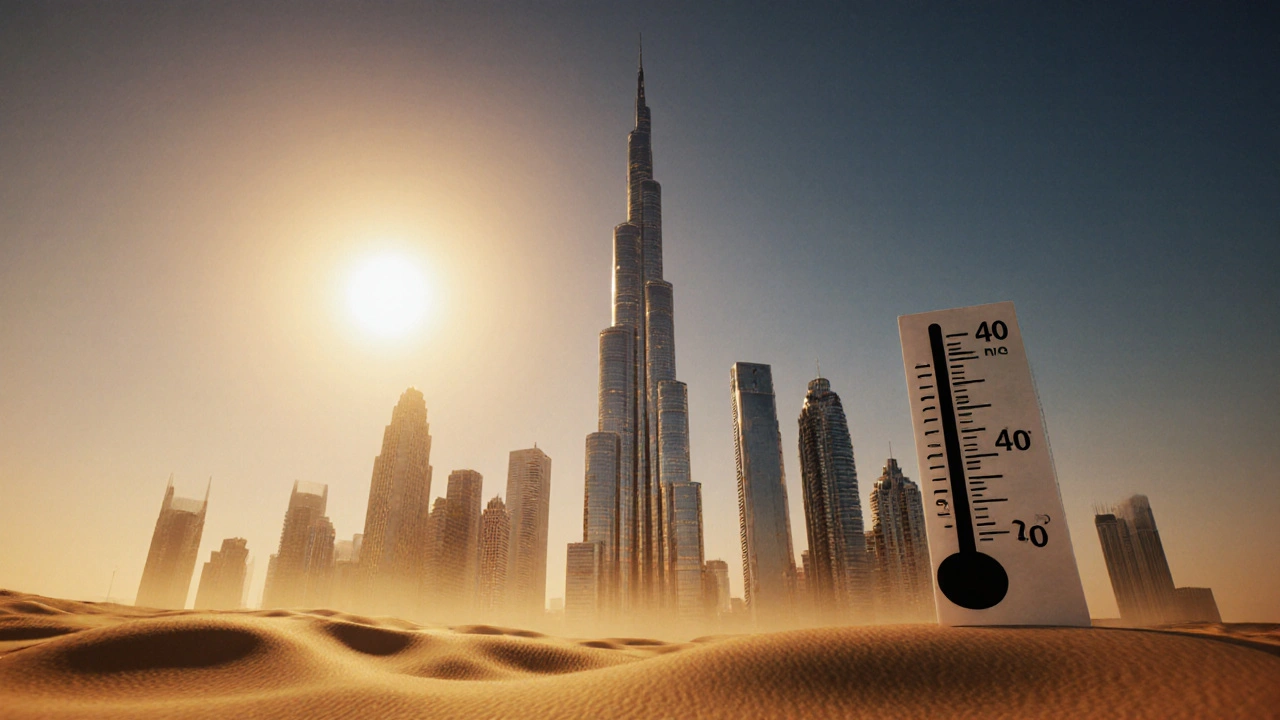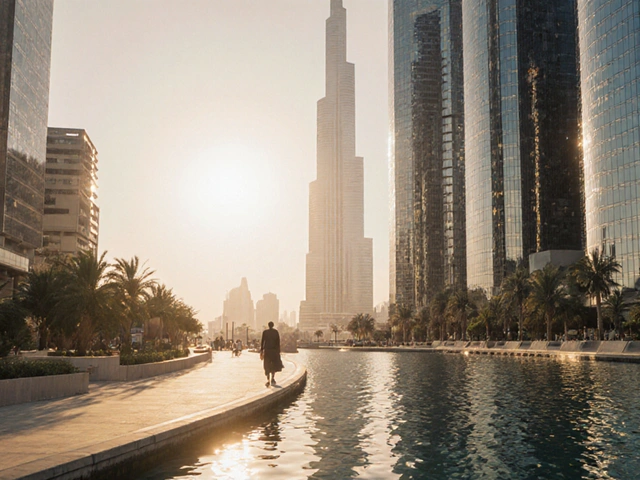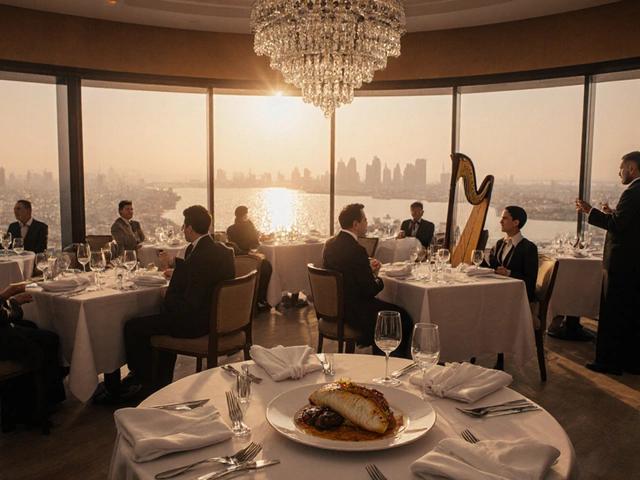Key Takeaways
- June through September are the peak heat months, with daily highs often above 40°C (104°F).
- May and October hover around the comfort threshold; early May can be safe, late October is usually pleasant.
- Humidity spikes in August, pushing the heat index above 45°C (113°F) - the most stifling time of the year.
- Even in “cooler” months, evenings can stay warm; pack light clothing and stay hydrated.
- Plan indoor activities or early‑morning outings during the hottest period to avoid heat‑related health risks.
Direct Answer
If you’re asking what months is Dubai too hot, the short answer is: June, July, August and most of September. During these months average highs sit between 40°C and 45°C (104°F‑113°F) and humidity pushes the perceived temperature even higher. May and October can feel tolerable, especially early May and late October, but they sit on the edge of comfort.
Understanding Dubai’s Climate
Dubai, located in the United Arab Emirates, sits in a desert zone that experiences extreme temperature swings. The city’s climate is classified as hot desert (Köppen BWh), characterized by scorching summers, mild winters, and very low annual rainfall.
Two key factors shape how hot the city feels:
- Temperature - the actual air temperature measured by weather stations.
- Humidity - the amount of moisture in the air, which dramatically raises the Heat Index (the "feels‑like" temperature).
When Humidity climbs above 70% in the summer, the Heat Index can exceed 45°C (113°F), making outdoor activities risky.
Monthly Temperature Breakdown
Below is a quick snapshot of average high, low, and humidity for each month. Data is drawn from the Dubai Meteorological Office’s 30‑year climate normals.
| Month | Avg High | Avg Low | Avg Humidity | Heat Index* |
|---|---|---|---|---|
| January | 24 | 14 | 50 | 26 |
| February | 26 | 15 | 48 | 28 |
| March | 30 | 18 | 45 | 33 |
| April | 35 | 22 | 44 | 39 |
| May | 38 | 25 | 50 | 43 |
| June | 41 | 28 | 55 | 47 |
| July | 42 | 30 | 60 | 49 |
| August | 42 | 30 | 62 | 50 |
| September | 40 | 29 | 58 | 46 |
| October | 35 | 24 | 55 | 38 |
| November | 30 | 20 | 52 | 32 |
| December | 26 | 16 | 50 | 28 |
*Heat Index reflects combined effect of temperature and humidity; values above 40°C (104°F) are considered “very hot”.

When Heat Becomes Unbearable
Most locals and Tourist health experts agree that a Heat Index over 40°C (104°F) marks the point where the body starts to struggle without extra precautions. That threshold is routinely crossed from mid‑June through early September.
Two extra dangers rise during those months:
- Heatstroke - sudden rise in core body temperature; symptoms include dizziness, nausea, rapid heartbeat.
- Dehydration - loss of fluids faster than you can replace them, especially when sweating is heavy.
Even if you’re staying in air‑conditioned hotels, stepping outside for just 10 minutes in August can feel like a sauna.
How to Stay Cool When Visiting in Hot Months
If your travel dates fall within June‑September, you can still enjoy Dubai by planning smartly:
- Schedule outdoor activities early. Sunrise to 10am offers lower temperatures and milder sun.
- Use indoor attractions. Museums, malls, and indoor ski slopes keep you entertained while staying Air Conditioning‑friendly.
- Stay hydrated. Drink water regularly; carry a reusable bottle.
- Dress appropriately. Light, breathable fabrics (cotton, linen) and wide‑brim hats help.
- Apply sunscreen. SPF30+ every two hours protects against UV‑B and UV‑A rays.
- Watch for sandstorms. Though rare in summer, a sudden Sandstorm can reduce visibility and increase irritation.
Travel Planning Tips: Best Months to Visit
For most visitors seeking outdoor comfort, the sweet spot is November through March. Daytime highs stay between 24°C and 30°C (75‑86°F), evenings are cooler, and humidity is lower.
If you can handle warm weather, late October or early May provide a balance: lower crowds, off‑season rates, and still enjoyable evenings. Just remember to check the monthly forecast before booking.

Comparison Table: Hot Months vs. Comfortable Months
| Aspect | Hot Months (Jun‑Sep) | Comfortable Months (Nov‑Mar) |
|---|---|---|
| Avg High Temp | 40‑42°C (104‑108°F) | 24‑30°C (75‑86°F) |
| Avg Humidity | 55‑62% | 45‑52% |
| Heat Index | 46‑50°C (115‑122°F) | 26‑32°C (79‑90°F) |
| Typical Outdoor Activity | Early‑morning walks, indoor malls | Beach, desert safari, rooftop dining |
| Risk Level | High (heatstroke, dehydration) | Low |
Frequently Asked Questions
What is the highest temperature recorded in Dubai?
Dubai hit an all‑time high of 52°C (125.6°F) on July21,2022, according to the National Center of Meteorology.
Can I travel to Dubai in August without getting sick?
Yes, but you must stay hydrated, limit sun exposure, and rely on indoor attractions. Many hotels provide complimentary bottled water and plenty of Air Conditioning.
Is the night temperature cooler enough for outdoor dining in summer?
Evenings in July‑August hover around 30‑33°C (86‑91°F), which can feel warm but tolerable with breezy locations along the Creek or beachside venues.
Do I need a visa to visit Dubai during the cooler months?
Visa requirements depend on your nationality, not the season. Most tourists apply for an e‑Visa valid for 30days, regardless of month.
What indoor attractions are best when it’s extremely hot?
Try the Dubai Mall (with its indoor aquarium), the Museum of the Future, Ski Dubai, or the Alserkal Avenue art hubs - all fully Air Conditioning‑climatized.
Next Steps
Now that you know which months turn Dubai into a furnace, you can decide whether to brave the heat or schedule your trip for the milder season. Check the latest weather forecast, book accommodations with good Air Conditioning, and pack a reusable water bottle. Safe travels!







Nakia Decosta
October 10, 2025 AT 14:05Dubai's climate peaks in the summer months, with daily highs often exceeding 40°C. Travelers should consider early‑morning activities or indoor venues during June to September.
Sean Jacobs
October 25, 2025 AT 01:18The reported temperature figures are typically sourced from official meteorological stations, yet independent sensors sometimes record even higher readings during peak summer. One could argue that the tourism board subtly downplays the severity to maintain visitor numbers, especially in the months when heat indices breach 45°C.
Mia B&D
November 8, 2025 AT 11:31It is evidently an affront to the discerning traveler when the discourse reduces the nuanced climatological patterns of the Emirate to mere bullet points. The author’s reliance on generic tables, while helpful, fails to capture the subtle yet revelatory shifts in humidity that render July mercilessly oppressing. Such oversights are, frankly, unrefined and detract from a truly sophisticated itinerary planning experience, definatly.
Chris Hill
November 22, 2025 AT 22:45Temperatures are but one facet of the broader ecological tapestry; one might contemplate how the desert’s diurnal rhythm invites moments of reflection even amid sweltering days. By aligning travel plans with sunrise or dusk, visitors can honor both personal comfort and the subtle equilibrium of the region.
Damien TORRES
December 7, 2025 AT 09:58When charting a voyage to Dubai, the first consideration ought to be the temporal window during which the ambient conditions align with one's physiological tolerance. The months of June through September present a meteorological crucible wherein maximum temperatures routinely eclipse the forty‑degree Celsius threshold, a figure that alone would challenge even seasoned explorers. Compounding this thermal onslaught is humidity, which in August frequently approaches sixty‑two percent, thereby inflating the heat index into the mid‑forties and engendering a sensation akin to stepping into a steam bath. Such parameters not only elevate the risk of heat‑related ailments but also diminish the pleasure derived from outdoor pursuits, rendering activities such as desert safaris or waterfront promenades virtually untenable without rigorous precautions. Conversely, the transitional periods of May and October occupy an intermediate niche, offering comparatively milder highs in the high thirties while still retaining the allure of the city’s vibrant cultural scene. During these shoulder months, early‑morning excursions permit comfortable exploration of landmarks such as the Al Fahidi Historical Neighborhood before the sun asserts its dominance. Midday intervals can be judiciously reserved for visits to climate‑controlled attractions, including the Dubai Mall's aquarium or the Museum of the Future, thereby preserving energy for evening engagements. Hydration assumes paramount importance throughout, with the recommendation of consuming at least two to three liters of water daily, supplemented by electrolyte solutions when perspiration intensifies. Moreover, attire crafted from breathable fabrics like linen or lightweight cotton can dramatically ameliorate thermal discomfort, especially when complemented by wide‑brimmed hats that mitigate solar exposure. Sunscreen, bearing a minimum SPF of thirty, should be reapplied at two‑hour intervals to safeguard dermal health against the relentless ultraviolet barrage. While the nocturnal temperatures in the heart of summer linger near thirty degrees Celsius, the presence of a gentle sea breeze along the Creek may impart a modest reprieve, albeit insufficient to replace proper cooling strategies. Travelers inclined toward gastronomic experiences will discover that many rooftop establishments incorporate misting systems, thereby extending the feasibility of al fresco dining into the later hours. Ultimately, a meticulously calibrated itinerary-one that interweaves early outdoor ventures, sustained indoor immersion, and vigilant self‑care-can transform an ostensibly oppressive season into a rewarding odyssey. By heeding these recommendations, visitors are poised to navigate Dubai’s climatic extremes while preserving both health and enjoyment. Should unforeseen heat spikes occur, adjusting plans on the fly remains both prudent and adaptable.